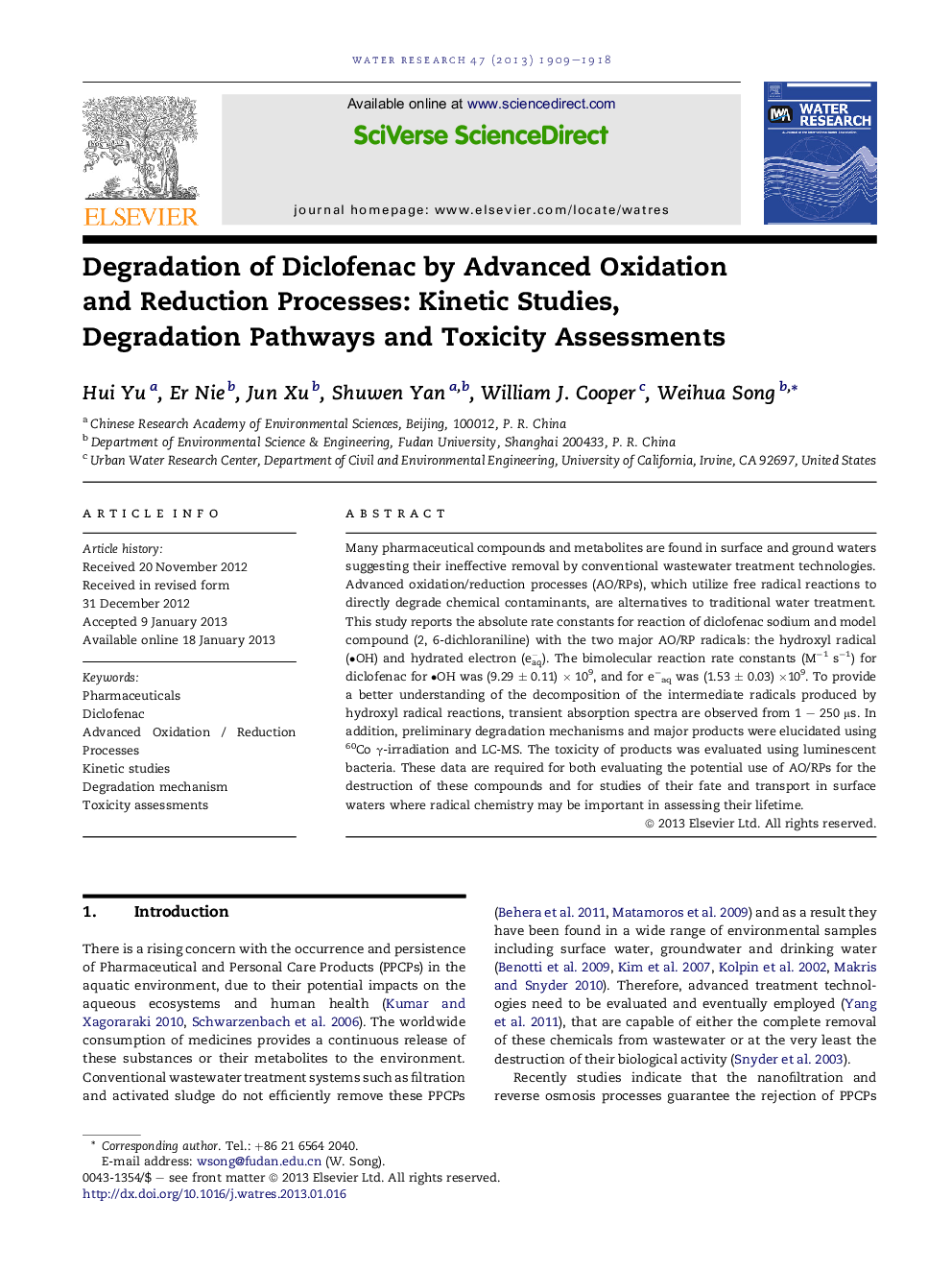| کد مقاله | کد نشریه | سال انتشار | مقاله انگلیسی | نسخه تمام متن |
|---|---|---|---|---|
| 4481841 | 1316836 | 2013 | 10 صفحه PDF | دانلود رایگان |

Many pharmaceutical compounds and metabolites are found in surface and ground waters suggesting their ineffective removal by conventional wastewater treatment technologies. Advanced oxidation/reduction processes (AO/RPs), which utilize free radical reactions to directly degrade chemical contaminants, are alternatives to traditional water treatment. This study reports the absolute rate constants for reaction of diclofenac sodium and model compound (2, 6-dichloraniline) with the two major AO/RP radicals: the hydroxyl radical (
• OH) and hydrated electron (eaq−). The bimolecular reaction rate constants (M−1 s−1) for diclofenac for
• OH was (9.29 ± 0.11) × 109, and for e−aq was (1.53 ± 0.03) ×109. To provide a better understanding of the decomposition of the intermediate radicals produced by hydroxyl radical reactions, transient absorption spectra are observed from 1 – 250 μs. In addition, preliminary degradation mechanisms and major products were elucidated using 60Co γ-irradiation and LC-MS. The toxicity of products was evaluated using luminescent bacteria. These data are required for both evaluating the potential use of AO/RPs for the destruction of these compounds and for studies of their fate and transport in surface waters where radical chemistry may be important in assessing their lifetime.
Figure optionsDownload high-quality image (97 K)Download as PowerPoint slideHighlights
► The reaction rate constants of diclofenac with
• OH and e−aq were evaluated.
► Degradation mechanisms were evaluated by LC-MS analysis.
► Advanced reduction process is more suitable for removing the toxicity.
Journal: Water Research - Volume 47, Issue 5, 1 April 2013, Pages 1909–1918